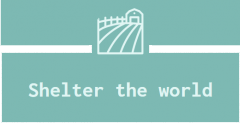The Australian Government has finally released Australia’s first National Climate Risk Assessment, and some of the findings are chilling.
This long awaited and delayed report confirms what many communities across Australia already know and experience every year: climate change is already here, it’s escalating, and without urgent action to phase out fossil fuels, the human and environmental cost will be catastrophic.
What the report reveals
The National Climate Risk Assessment paints a brutal picture of the consequences of digging and burning fossil fuels for our communities and the places we love.
It looks at the upward trend in deadly heatwaves, devastating floods, and worsening fire seasons. It talks of mega droughts not seen since European settlement, and of accelerating sea level rise. It shows us how these changes are impacting our health, our economy, our physical safety, and even our national security.
The Risk Assessment also reveals that while none of us are immune, the impacts are not being felt equally. It is hitting the poorest and most disadvantaged in our community first and hardest, leading to widening inequality. It emphasises the profound impacts of climate change and the fossil fuel industry on First Nations communities, including threats to self-determination.
Most importantly, the Risk Assessment drives home the importance of our decisions and actions today when it comes to limiting future harms and creating a safer future for all. It shows us what Australia will be like under 3°C of global warming – which is roughly the path we are currently on – and just how much pain and suffering we avoid by fighting to limit warming to 1.5°C. So let’s take a closer look.
For tropical coral reefs, the difference between 1.5°C and 2°C of warming is the difference between giving them a fighting chance and watching them mostly disappear.
© Greenpeace / Grumpy Turtle / Harriet Spark
The cost of delay: What the numbers tell us
You may want to read this part sitting down. For the truth is, if we continue down the path of coal and gas, and allow the Earth to warm 3°C, then our future becomes very dangerous indeed.
The Risk Assessment warns of high-risk communities being permanently displaced from their homes. It projects that heat-related deaths would increase by up to five times in some parts of Australia. The cost of disaster recovery could be seven times greater. Our oceans could see a tenfold increase in the amount of time spent under marine heatwave conditions – a death sentence for critical marine ecosystems like the Great Barrier Reef.
These changes would not be felt gradually or smoothly. We would reach dangerous tipping points in our climate system that would unleash abrupt, cascading and irreversible impacts, affecting all life as we know it.
Rescuing a possum during the catastrophic 2019-20 ‘Black Summer’. Climate change has already led to longer and far more dangerous fire seasons in Australia.
© Kiran Ridley / Greenpeace © Kiran Ridley / Greenpeace
What we still have to fight for
It is easy to see these confronting numbers in the report and despair. But look closer and you see another story. The story of just how much we can and must fight to save, and why our work together today matters more than ever.
Extreme heat is the most deadly impact of climate change, and every fraction of a degree of avoided warming means many lives saved. Limiting warming to 1.5C would see far fewer dangerously hot days later this century than if we continue on our current trajectory (a 50% increase on current levels versus a fourfold increase). It would also mean far less stress on our vital and fragile ocean ecosystems. For tropical coral reefs, it will be the difference between giving them a fighting change and watching them mostly disappear.
When it comes to sea level rise, while we cannot stop the seas from rising due to the amount of excess heat now stored in the ocean and the inertia in the melting of polar ice, strong action today can still limit the rate and extent of sea level rise. For some communities, this may be the difference between a future to which it is possible to adapt, and one that overwhelms them.
While the Risk Assessment is focussed on Australia, how our Government responds, and whether we choose to act in line with the science, will send ripples far beyond our shores.
As Pacific nations and communities have long held out – 1.5°C is not just a target, it is a lifeline. Australia, as a fossil fuel giant, continues to be a major contributor to the global climate crisis, but we have everything we need to be part of the solution.
© Marcus Coblyn / Greenpeace
The choice – and the hope
Right now, the Australian Government is on the cusp of announcing our new climate plan for 2035. It is a decision that will affect the lives of all Australians. For it is our actions now, this decade that will determine whether we can avoid the worst impacts of climate change.
Setting a strong, science aligned target of net zero by 2035 – accompanied by a commitment to phase out fossil fuels – will be our best shot at a safer, more dignified future for all. So let’s do this!
Leave a comment


